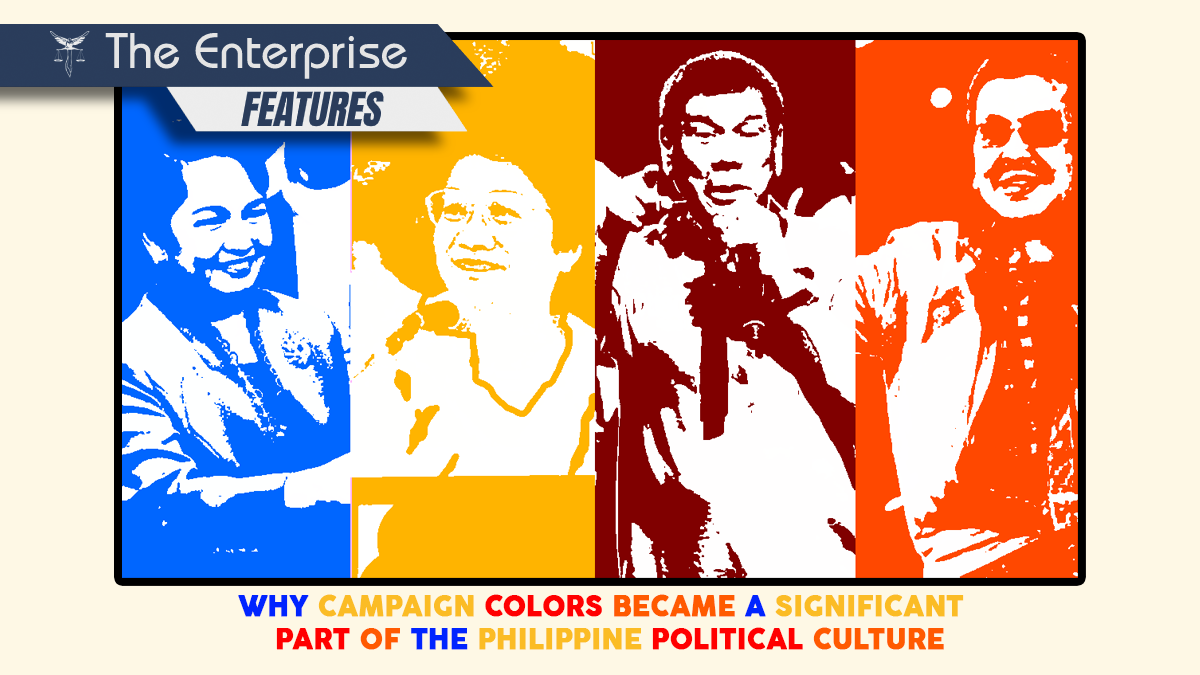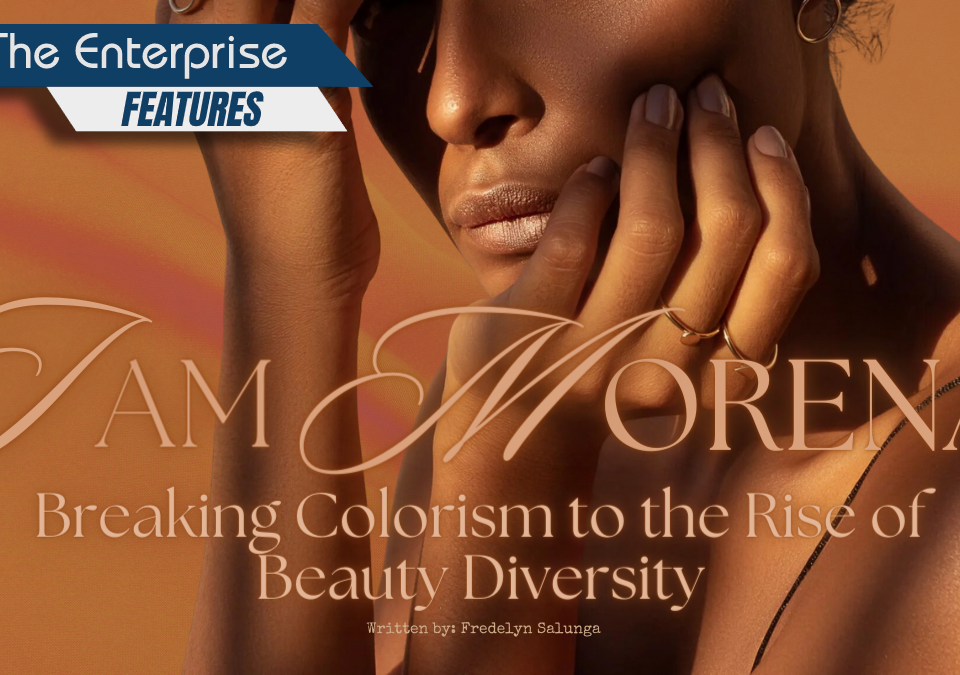
UAAP reopens this March after its 2-year hiatus
March 28, 2022
State of Infections: The Striking Rebound
May 13, 2022Colors in Politics: The Whys and its Origin

“Dilawan ka! Yellowtard!”, “Red? Ahh, siguro ay Marcos o DDS ‘to”, “Ano kayo, Kakam-Pink?”, and “Orange? ERAP Para sa Mahirap!” are some of the typical rebuttals and statements that the public hears during the height of election campaigns here in the Philippines. Clearly, this shows how one color can be the brand of a single party or person and can significantly form an association between them.
Political branding propaganda is not something that is out of the ordinary, and the same goes with having political colors worn like badges and waved as flags. This year’s election is no exception to this culture. With the heated bantering that happens among each candidate’s supporters especially online, let us discover when this ‘color war’ started and how relevant it is in a candidate’s campaign.
Political color as a form of (political) branding
Knowing how to sell yourself to the masses is one of the keys to garnering higher votes. People are more likely to vote for a candidate if they are familiar with them. Therefore, it is vital to work on your publicity and brand if you are a politician.
Branding can often be hand signs, campaign slogans, jingles, logos, skits, and sometimes even mascots in the political scene. These strategies help electoral candidates establish a distinct image to the public, which allows them to deliver a message, leave an impression, and integrate a brand recall and recognition.
As we identify a red soda can to Coca-Cola, a big yellow “M” as McDonald’s, and a purple chocolate wrapper for a Cadbury, the impact of color on branding and marketing becomes more distinguished.
Just as we associate a specific color to a brand, some predominant political colors here in the Philippines, such as red, yellow, pink, and orange, also have their corresponding influence that reminds and connects the people to a particular party or person.
A trip down memory lane
However, before all the political colors emerged, the Philippines held only a single color regarding politics — red. The Nacionalista Party, the Philippines’ and Southeast Asia’s oldest political party founded in 1907, carried this color.
While after the founding of the Liberal Party that stemmed from Nacionalista in 1946, they have painted their mantles blue. This transition has started the colors in politics and the seesaw for leadership between the blue and the red.
However, it was not until Ferdinand E. Marcos was elected in 1965 that we got to see the louder support in the machinery of using colors in politics. He changed his colors from blue to red when he failed to win the Liberal Party’s favor.
Winning the presidential elections, Marcos began ‘painting the town red.’ With over two decades of a tight chokehold over the Philippines’ commands, the reds took over, and the blue party has lost its shine.
Yet, a rising contender in the person of Benigno “Ninoy” Aquino was folding arms to face the dictator. But, in 1983, as Aquino landed back in Manila from Boston, an assassination attack turned into bloodshed.
Tug of War
This assassination then turned out to be one of the most historical events in the Philippines. It has started a revolution and prompted people to go out on the streets and oust the man in the Palace drenched in red.
As people marched and rallied across the country, they carried a color that symbolized democracy — yellow. Swarms of yellow flags, yellow shirts, and yellow ribbons shrouded the roads, turning it into a Yellow “People Power” Revolution, a protest against the Marcos dictatorship.
But as much as Aquino’s death awakened the revolt, the use of yellow was also inspired when Aquino urged his family in Manila to tie yellow ribbons around the branches of trees that lead to his house before he left for Boston. This was a nod to one of his favorite ballads, “Tie A Yellow Ribbon Round the Old Oak Tree”.
From here on, the rope of power has been a tug of war, primarily between red and yellow.
Alongside this war are also the supporters of each party, trying to fight their own battles as they defend their party’s colors. This is why the Liberal Party supporters were being tagged as “Dilawan or Yellowtards”, and the association of red with Marcos’ supporters.
The emergence of new hues
On the other hand, due to the heavy connotation that goes with bearing a particular color, some politicians have started to have their brands and colors that represent their cause but, at the same time, swerve the spotlight from the typical red and yellow.
In a 2010 interview, Former President Joseph “Erap” Estrada recalled the history of using orange as his political color. He mentioned that orange has always been his color, even when he ran for the senate, vice presidency, and presidency.
Erap’s reason behind this was that he wanted to put both colors together to symbolize unity; this is with the Marcos color being red, and the Aquino color being yellow.
Consequently, one of the 2022 Presidential Candidates, Leni Robredo, who is a chair of the Liberal Party, chose to run in an independent bid, devoid of the typical yellow brand that was expected of her.
When asked about her campaign color, Robredo clarified that it was not planned and that it was her volunteers and supporters that chose Pink, which for them was a symbol of activism and protest.
Indeed, colors are a great way to represent a person and their values and cause. It is a way of communicating a message without words and showing support with just hues. As the 2022 election day draws nearer, and as these different colors are presented to us once again, may we be reminded that our choices are substantial and our nation’s future lies within us, not the colors in front of us.
LAYOUT BY: Casey Aguilos
PHOTO SOURCE(S): Flickr, AFP Photo, Lance Cpl. Ethan Hoaldridge, Rene Dilan


